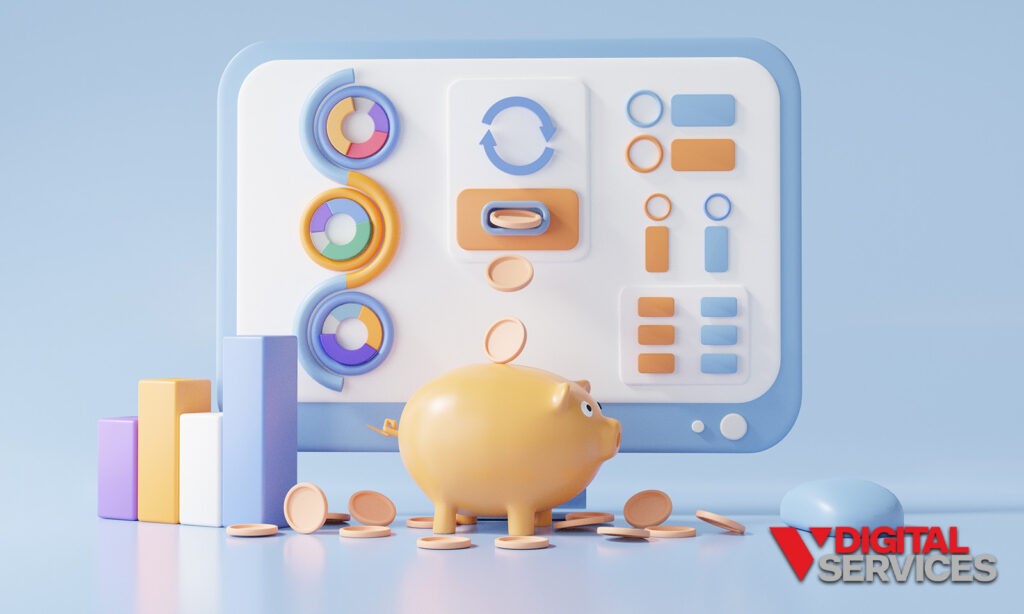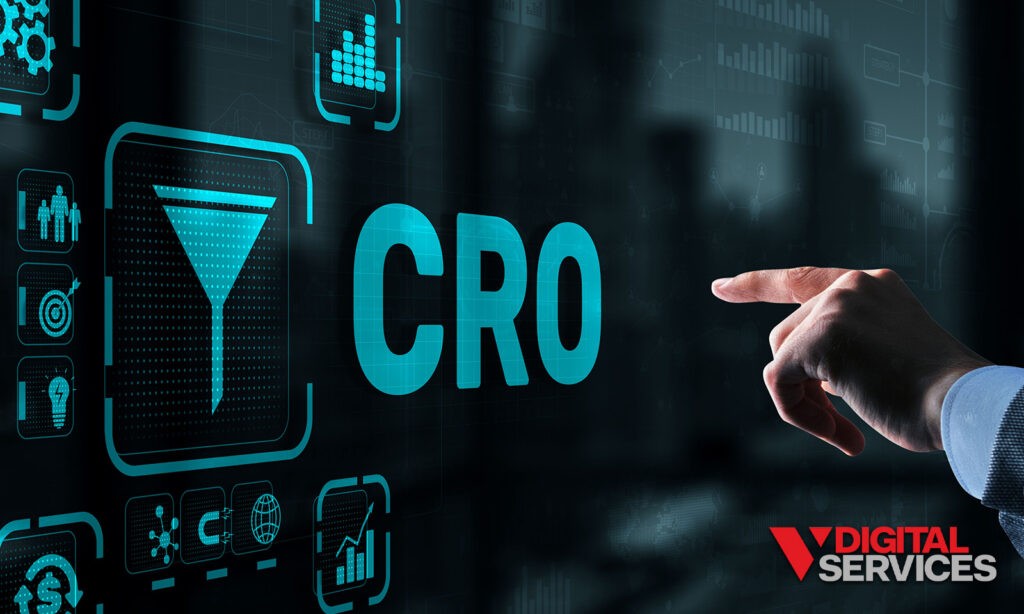As any business owner knows, driving traffic to your website is only half the battle. The real victory lies in converting that traffic into loyal customers, but how do you know how effective you are at encouraging visitors to make a purchase, sign up for your newsletter, or engage with your content?
The answer: Conversion rate.
This critical metric not only gauges your site’s effectiveness but also provides insights into areas of improvement. Whether you’re new to the concept or seeking advanced techniques, this guide will delve into what conversion rate is, how to calculate it, and actionable steps to optimize it for better results.
What is Conversion Rate?
The conversion rate is the percentage of website or landing page visitors who take a desired action or “convert.” This conversion isn’t just a one-size-fits-all definition; it’s flexible, molding itself to align with your specific business objectives.
Here are several common examples of what conversions could look like:
- Purchases: The act of buying a product or service.
- Form Submissions: Whether it’s a contact form, lead generation form, or any other.
- Telephone Calls: Calls made to your business via contact information provided on your site.
- Online Chat Engagement: When visitors utilize your chat feature for inquiries or support.
- Subscriptions: Signing up for periodic content, whether it’s free like newsletters or a paid subscription.
- User Registrations: Creating an account on your platform.
- Digital Downloads: Acquiring digital products such as software trials, e-books, or apps.
- Active Usage: Engaging with unique features of your app or software, or spending a predefined amount of time using it.
- Service Upgrades: Moving to a higher-tiered service.
- Site Engagement: Measures like time spent on your site, repeated visits, or the number of pages browsed.
While the above is not an exhaustive list, it does cover the most common actions a “conversion” entails. But at its core, a conversion signifies a tangible step taken by a visitor that brings them closer to becoming not just a lead, but a loyal customer.
How to Calculate Conversion Rate
Now, you can understand why conversion rate is such a valuable metric. Let’s take a look at exactly how to use the conversion rate formula to gain insights into website and campaign performance.
To calculate the conversion rate, you follow a simple formula:
Conversion rate = (Conversions / Total visitors) × 100
Using this straightforward conversion rate calculator method, let’s walk through a quick example:
- Suppose in a particular month, your website has 20,000 visitors, out of which 2,500 become converted customers or leads.
- Plug these numbers into our formula:
Conversion rate = (2,500 / 20,000) × 100 = 12.5 - So, your website has a conversion rate of 12.5% for that month.
Many platforms, like Google Analytics or Google Ads, can show you this percentage directly if set up correctly. Still, understanding the calculation process behind it is very useful.
The beauty of the conversion rate is its adaptability. You can tailor it to examine various facets of your marketing efforts, giving you a clear picture of what’s working (and what’s not). For example:
- Overall Conversion Rate: Reflecting how efficiently your website transforms traffic from any source.
- Marketing Channel Conversion Rate: Evaluating the conversion efficiency of different sources, be it Google Ads traffic or Facebook Ads traffic.
- Page-level Conversion Rate: Investigating which pages on your website have the highest propensity to convert.
- Campaign Conversion Rate: Assessing the impact of specific changes to your marketing campaigns.
- Individual Ad Conversion Rate: Deciphering if certain ads perform better than others and if they attract more qualified visitors.
- Keyword Conversion Rate: Identifying which keywords maximize conversions and may be worth increasing the budget for.
While driving traffic to your website is a commendable achievement, it’s the conversion rate that truly measures the efficacy of that traffic. Remember, it’s not just about the clicks; it’s about the actions those clicks lead to, which ultimately influence your business’s bottom line.
Why data sources matter
When you’re talking about digital analytics, the aphorism “quality over quantity” has never been more on-point. When delving into metrics, particularly conversion rates, the authenticity and depth of the data you analyze can either bolster your insights or mislead you entirely.
Imagine a scenario where your metrics reveal a 100% conversion rate. At first glance, this seems impressive. But if the underlying data shows this rate was achieved from just a solitary visitor, its significance dwindles. Such limited data lacks the comprehensive depth needed to make informed decisions. For instance, out of a mere 20 site visitors, if only one person converts—by accident—can we genuinely believe the site is performing optimally? The chances are slim.
In contrast, let’s say 5% out of a pool of 10,000 visitors convert, and only a handful of these are accidental conversions. Even with those errors accounted for, the data remains consistent, only seeing a minor dip to a 4.95% conversion rate.
Traffic will always introduce variables—whether it’s accidental clicks, user hesitations, or sporadic conversion peaks and troughs. However, the solution lies in sampling over an extended period, ensuring any anomalies get ironed out in the vast sea of numbers. There’s no one-size-fits-all approach to this timeframe.
For some very large enterprises, a day’s data might suffice, while smaller websites might require several months to glean genuine insights. The key is to seek depth and consistency in your data, ensuring every decision made is rooted in meaningful analytics.
Conversion rate vs. click conversion rate
When it comes to metrics and analytics, certain terms can seem almost interchangeable. Two such terms that often stir confusion are “conversion rate” and “click conversion rate.” Let’s take a closer look at the distinction between the two:
- At its core, the conversion rate tells us about the efficiency of our website or landing page in driving desired actions. As we’ve discussed, it’s calculated by taking the number of conversions and dividing it by the total number of visitors, multiplied by 100%.
- On the flip side, click conversion rate brings a slightly different perspective to the table. Instead of focusing on every conversion, it hones in on unique visitors who have converted. It answers the question of what to do if the same visitor converts multiple times, so you can determine how many unique visitors are converting (rather than just total conversions).
It’s calculated with this basic formula:
Click conversion rate = (Converting visitors / Total visitors) × 100
For several businesses, the figures for conversion rate and click conversion rate may mirror each other closely. However, in scenarios where repeat conversions from the same visitor are frequent, understanding the click conversion rate becomes pivotal. It offers insight into the diversity of visitors converting, ensuring that you’re not just seeing repeat actions from a few loyal customers but drawing in new ones consistently.
What is a Good Conversion Rate?
Defining a “good” conversion rate can seem like a moving target. However, understanding industry standards and how your business fits within that spectrum can be hugely helpful in setting realistic benchmarks.
First, it’s essential to remember that conversion rates can vary widely across industries. For instance, while a 2% conversion rate might be exceptional for a high-ticket e-commerce store, it could be considered below average for a newsletter signup form on a content-rich blog.
Several factors play into what defines a good conversion rate for a particular business. These can include the nature of the conversion action (like buying a product vs. subscribing to a newsletter), the industry you’re in, the quality of traffic being driven to the site, and the effectiveness of the website’s user experience.
Moreover, context matters. While industry benchmarks provide a guiding light, your company’s historical data can offer richer insights. If your conversion rate has been steadily increasing over time, even if it’s below the industry average, you’re likely on the right path.
While aiming for industry standards is valuable, the best benchmark is often your own past performance, combined with a clear understanding of your specific business context and goals.
How to Track Conversion Rate
Tracking conversion rate is pivotal in understanding how well your website or campaign is performing. Most businesses leverage tools like Google Analytics, which provides a user-friendly interface to monitor conversions. After setting up specific conversion goals, whether they’re form submissions, product purchases, or email sign-ups, the platform automatically calculates the rate for you.
Beyond Google Analytics, other specialized platforms, like Mixpanel or Hotjar, offer deeper insights and user behavior analysis. Regularly monitoring these metrics ensures you stay attuned to any changes, allowing timely adjustments to maximize conversions and achieve optimal results.
How to Increase Conversion Rate: Conversion Rate Optimization (CRO)
Conversion Rate Optimization (CRO) is a structured approach to boost the effectiveness of your website or landing page, with the ultimate goal of increasing conversions.
Here are some crucial steps to kick off your CRO journey:
- Analyze and Understand Your Audience: Begin by collecting qualitative data about your visitors using surveys or feedback forms. Who are they? What challenges do they face? What brought them to your website? The answers will help shape your content and design decisions.
- A/B Testing: Run split tests on various website elements like CTAs, images, or headlines. By comparing two versions (A and B) of a page, you can determine which one drives more conversions.
- Optimize Landing Pages: Landing pages are your digital storefronts. Ensure they’re clear, concise, and compelling. Remove any distractions that might divert visitors away from the primary action you want them to take.
- Enhance Website Speed and Performance: A slow-loading website can deter potential conversions. Regularly check your website’s speed and eliminate any unnecessary elements that might be slowing it down. Compress images, streamline code, and consider using a Content Delivery Network (CDN) for better loading times.
- Offer Social Proof: Incorporate reviews, testimonials, or case studies. These provide credibility and reassure visitors about the quality of your product or service.
- Implement Clear Call-to-Action (CTA) Buttons: A CTA should be noticeable and inviting. It must clearly state what you want the visitor to do next, whether it’s “Buy Now”, “Sign Up”, or “Learn More”.
- Utilize Retargeting Campaigns: Sometimes visitors need a gentle nudge. Retargeting ads remind them of their initial interest and encourage them to revisit and complete the conversion.
By following these steps and regularly reassessing your strategies, you’ll be well on your way to elevating your website’s conversion rates and overall performance.
Implement a CRO Strategy with Our Help
Understanding and optimizing your conversion rate can be the difference between growth and stagnation. Conversion Rate Optimization (CRO) isn’t just a buzzword; it’s a proven methodology to ensure your website works as hard as you do. But remember, optimizing conversions requires expertise, continual testing, and a deep understanding of your audience.
If you’re ready to elevate your digital strategy and drive tangible results, our team is here to help. Contact us for more information about personalized CRO solutions today!
Photo Credits:





 PREVIOUS
PREVIOUS